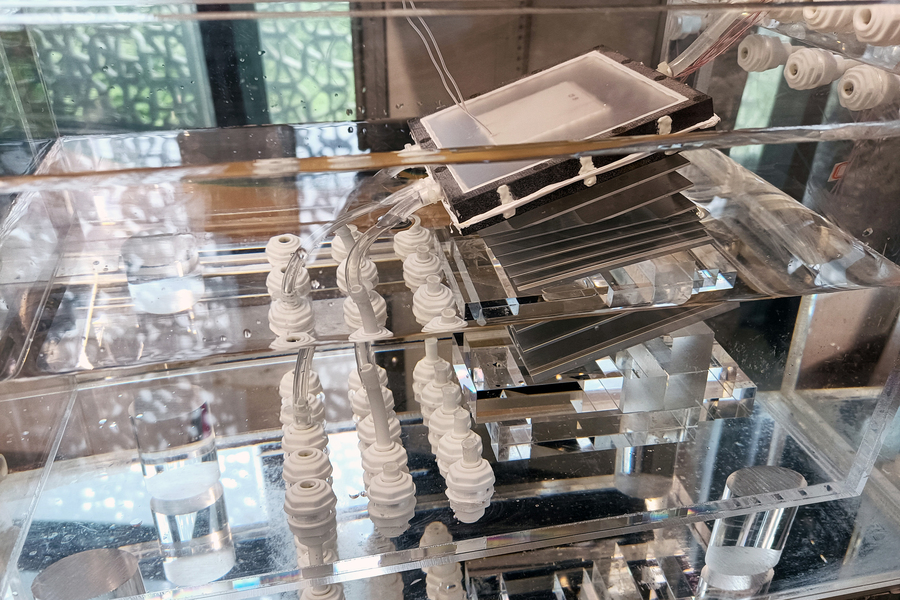Researchers led by MIT and Shanghai Jiao Tong University have demonstrated solar-powered multi-stage membrane distillation. They claim it can significantly reduce the cost of water production.
“The configuration of the device allows water to circulate in swirling eddies, in a manner similar to the much larger ‘thermohaline' circulation of the ocean,” the scientists said. “This circulation, combined with the sun’s heat, drives water to evaporate, leaving salt behind. The resulting water vapor can then be condensed and collected as pure, drinkable water. In the meantime, the leftover salt continues to circulate through and out of the device, rather than accumulating and clogging the system.”
Thermohaline circulation describes how fluid motion occurs due to the buoyancy difference between hot, less dense material rising and cold, denser material sinking under gravity, leading to heat transfer.
The researchers said that if they upscale the system to the size of a small suitcase, it could generate 4 liters to 6 liters of drinking water per hour and last for several years before needing replacement components. At this scale and efficiency, the system could produce drinking water more affordably than tap water.
The device comprises a series of compartments with heat exchangers and condensate collectors. The central component is a single-stage unit resembling a slim box covered in heat-absorbing dark material. Inside, the box is divided into upper and lower sections.
Water flows through the top half, featuring an evaporator layer on its surface that utilizes solar heat to evaporate water directly. The resulting water vapor is then directed into the bottom half of the box, where a condensation layer cools it, transforming it into drinkable, salt-free liquid. The researchers positioned the entire box at an angle inside a larger, empty container, connecting a tube from the top half of the box to the bottom of the vessel and allowing it to float in saltwater.
“In this configuration, water can naturally push up through the tube and into the box, where the tilt of the box, combined with the thermal energy from the sun, induces the water to swirl as it flows through,” the researchers explained. “The small eddies help to bring water in contact with the upper evaporating layer while keeping salt circulating, rather than settling and clogging.”
The team built several prototypes, with one, three and 10 stages, and tested their performance in water of different salinity, including natural seawater and seven times saltier water.
“With a 10-stage device, we achieve record-breaking solar-water efficiency of 322%-121% in a salinity range of 0 to 20% by weight, under the illumination of a single sun. Furthermore, we demonstrate extreme resistance to salt accumulation with a 180-hour continuous desalination of 20 wt% concentrated seawater,” they concluded.
They presented the system in “Extreme salt-resisting multistage solar distillation with thermohaline convection,” which was recently published in Joule.
This content is protected by copyright and may not be reused. If you want to cooperate with us and would like to reuse some of our content, please contact: editors@pv-magazine.com.



Hello, I am interested in the solar-powered multi-stage distillator. Is it produced? If so by whom?
How much sun does it need, and would it work during winter?
I would appreciate a reply.
Thank you in advance
Markus Dittrich